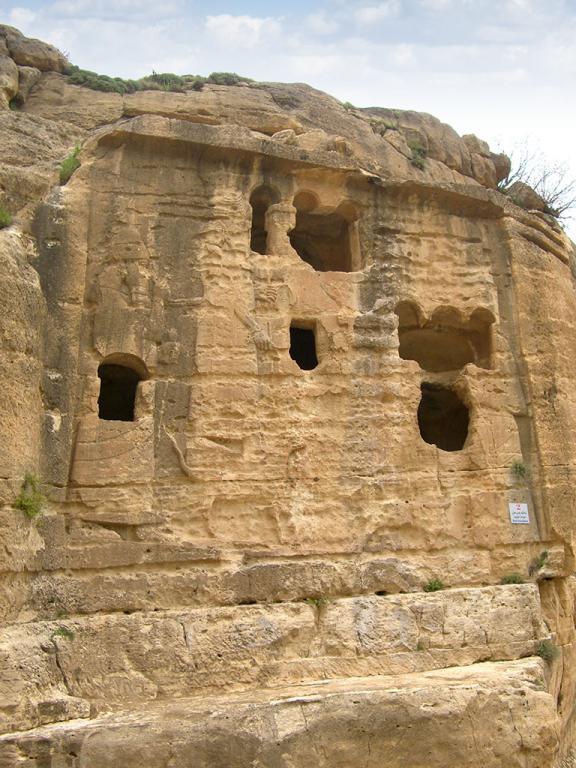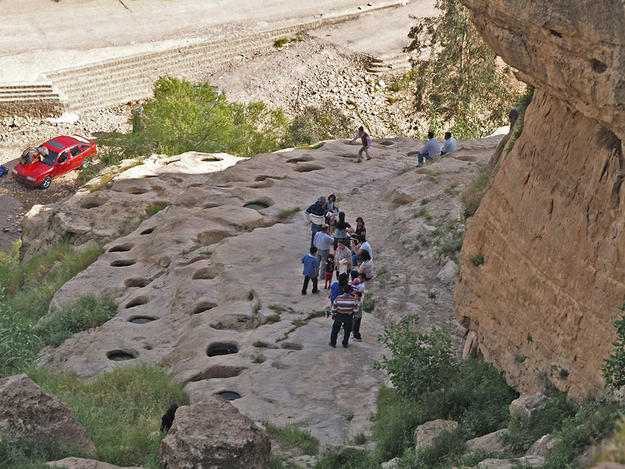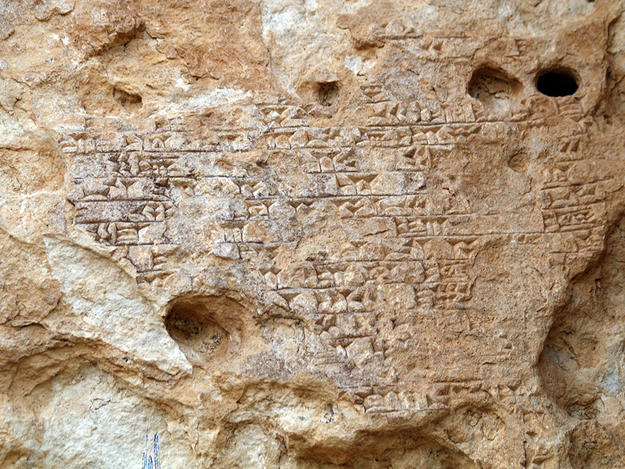Khinnis Reliefs
2014 World Monuments Watch
Khinnis rose to prominence around 700 B.C. during the reign of Assyrian King Sennacherib (r. 705–681 B.C.), when the site served as the head of a great engineering system that provided water to Nineveh. The canal was carved out of rock and the cliff is decorated with reliefs of the king, deities, animals, mythical figures, and cuneiform inscriptions celebrating Sennacherib’s achievements and describing the politics and ideology of the Assyrian Empire. In addition, the reliefs represent Sennacherib’s accomplishments in agriculture, engineering, land management, and economic systems. Khinnis also contains rock-cut structures, possibly tombs or monastic cells, similar to those created throughout the region in late antiquity.
Quarries, the reliefs (possibly of a later date), and the site’s use in late antiquity indicate its importance throughout the centuries. The reliefs are threatened by encroaching development, and they are in need of more comprehensive heritage management planning. They also require conservation work, as the stone surfaces suffer from exfoliation and staining caused by water runoff and the quality of the limestone. Khinnis is an icon in the region and a popular destination for tourists, as well as historians and archaeologists who study the ancient culture. Due to its high volume of visitors, it is in need of improved facilities and interpretation. The public should be better informed about its significance, and recreational use and conservation must be balanced at the site. Khinnis was included on the 2014 World Monuments Watch to increase awareness of heritage assets in the area and improve visitor experiences through fuller interpretation.



